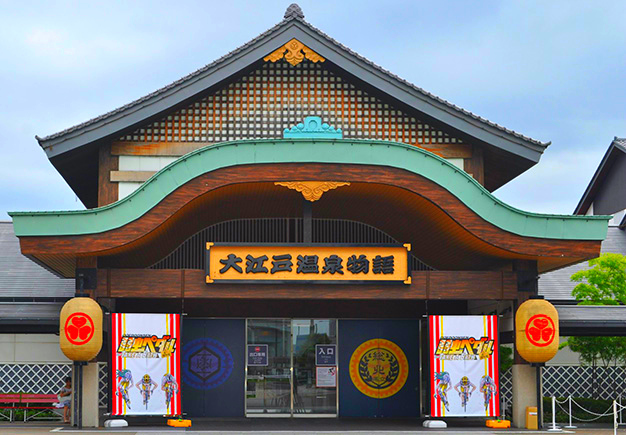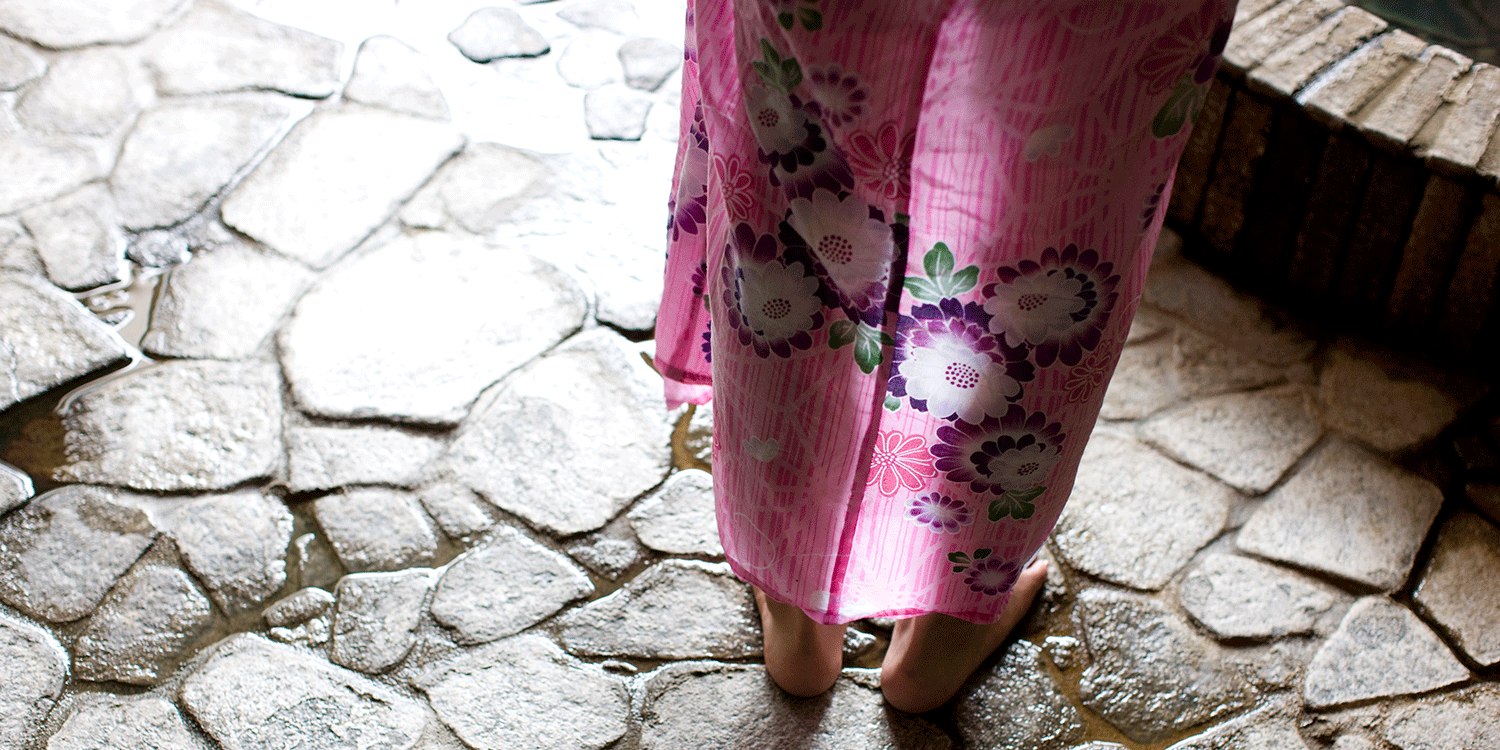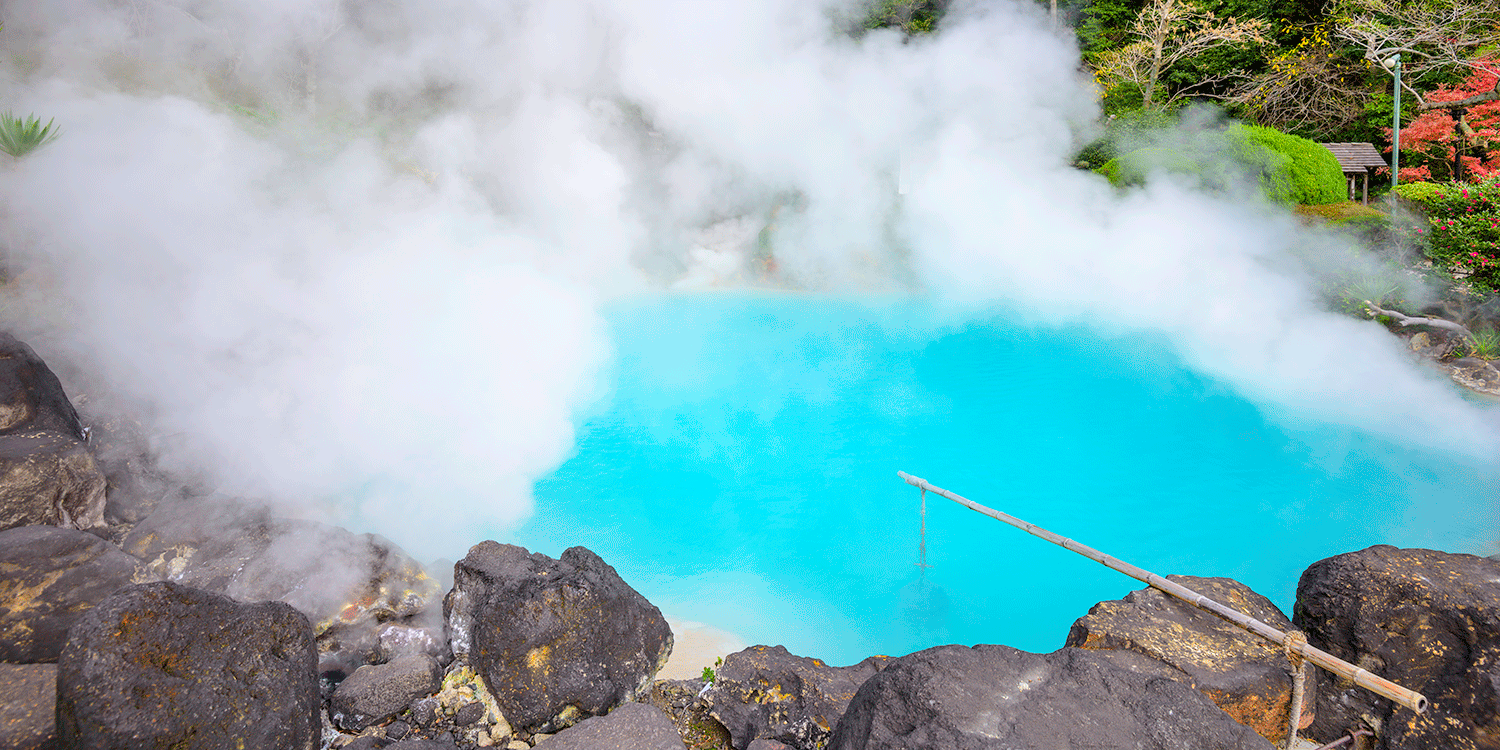
As a volcanically active country with an abundance of natural hot springs, Japan has a culture of public bathing. People bathe for relaxation, for cleansing, for hadaka no tsukiai or ‘naked friendship’ (more on that soon). Some believe the minerals in the water offer health benefits too.
Japanese hot springs and their surrounding facilities are called onsen. Onsen can take the form of anything from luxurious hotel spas to rustic open-air baths.
While staying in Tokyo I was recommended Oedo-Onsen Monogatari by several local people. Located at Odaiba, an island created from reclaimed land in Tokyo Bay, OOM styles itself as an ‘onsen theme park’, evoking a festival of the Edo (Oedo) period. I wondered whether this made OOM inauthentic but according to literature it plumbs hot springs 1,400 metres deep and qualifies as an onsen (as opposed to a sentō – a bath house using artificially heated water).
Leaving my sandals in a locker in OOM’s entrance hall, I was invited to choose my borrowed yukata – a casual kimono secured with an obi sash. I opted for a pink one depicting an Edo-age princess. “Have I tied this properly?” I asked a young woman in the changing rooms. “I don’t know!” she giggled. “I’m Korean.” We wandered into the Edo-style village together. I felt comfortable and almost stylish.

The village was actually a cavernous room painted in dark colours to give the illusion of being outside at night. Twinkly paper lanterns were strung across the ‘sky’, illuminating the eateries, shops and sideshows which flanked the main walkway. A small stream trickled beneath a small wooden bridge. OOM was indeed a theme park, but it felt quaint and exciting to me – not tacky.
I enjoyed a generous plate of yakisoba noodles and a mug of beer, charging everything to the electronic wristband I’d been given at reception. Ramen, sushi, crêpes, yakitori, Korean pancakes, ice-cream, spirits and sweets were also available. Water and green tea were free.
I passed up the chance to visit a fortune teller (who told futures in Japanese) but couldn’t resist trying my hand on the ninja star stall. I got five attempts and five times my metal star fell miserably to the floor. A group of teenage boys played after me and I found it endearing that they’d decided to bathe together. Other OOM guests were mothers and daughters; couples of all ages; families with small children; groups of female friends. While men and women are segregated in the main bathing areas, the outside foot bath (ashi-yu) is for everyone.
At reception I’d been warned about tattoos. They’re forbidden in many onsen due to their association with yakuza (organised criminal groups). While the Japan Tourism Agency is pushing for this policy to be relaxed for foreign visitors, it was still in evidence at OOM. “You will be asked to leave our facility as soon as your tattoo is spotted,” read the leaflet. “We will not reimburse you for the admission fee.”
I’m not inked, but I had another worry. Swimsuits are forbidden in the baths at OOM. This is the case for many Japanese onsen as nudity is considered to be a social leveller, breaking down barriers and encouraging people to be more open in their relationships – hence the ‘naked friendship’ concept. I felt nervous about this. I’m generally at peace with my far-from-perfect body but two weeks among slim, sophisticated Tokyoites had made me conscious of my every wobble. I was only six months on from having a baby, and still breastfeeding. The idea that many Japanese people happily bathe naked with friends, family and even colleagues made me blush.
But something happened as I entered the changing area for the women’s baths, collected my towels and shyly shed my yukata. Women of all ages and shapes were folding their yukata into lockers too, striding to the baths, talking and laughing, apparently not caring about their nakedness and certainly not noticing mine. I’d been given a flannel for washing, and was using it as best I could for covering my private parts, but suddenly I realised how ridiculous I was being, and how ineffectual the tiny flannel was anyway. So I did what others were doing and used it to tie up my hair.
At all onsen, you must clean your body thoroughly before bathing: it’s a hygiene consideration turned into a cultural expectation. For this purpose OOM offered a traditional-looking well with wooden ladles, similar to those at the entrances to Shinto shrines. I did my sloshy best, then gave myself up to one of the powerful showers.

Cleansed of sweat and suncream, I headed for the nearest bath and clambered in, allowing the hot water to embrace every part of me from toes to neck; feeling myself breathing slowly and more deeply. As I moved between the many different pools, some outside in rocky pools, and the saunas, I began thinking less about what my body looked like and more about what it has achieved. Thirty-three years of good health! Two babies! Nudity was OK. Although I stopped short of seeking out a naked friendship...
Guests can book treatments at OOM: salt stone sauna, massage, fish therapy. I hadn’t, feeling that experiencing my first onsen was enough. OOM’s opening times are from 11am until 9am the next day so you can stay overnight if you wish, paying for a capsule room, or lounging on tatami mats in the relaxation area.
I didn’t linger long, though, finding the 40-degree water temperature unbearable in Tokyo’s August humidity. Instead I enjoyed a shower in a semi-private stall, sampling the exotic-looking body wash, shampoo and conditioner from large bottles before reinstating my yukata and treating myself to a rare blow-dry and make-up session.
Back in my clothes, I settled my wristband fee, collected my sandals and headed for the sunshine of Tokyo Bay, feeling like a million yen. That’s about £7,620 – not bad at all.
Discover more about Oedo-Onsen Monogatari

Serene Spy
25th October 2016
Spy Likes:
Attentive friendly staff, personalised treatments, imaginative spa food menu and spas that look after their therapists’ wellbeing too.
Spy Dislikes:
Changing rooms and showers that aren't spotless, tatty towels and robes and having to get dressed for lunch.
